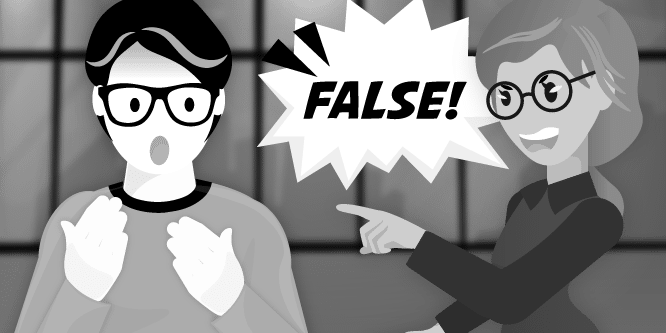Introduction
In the realm of decision-making, understanding the psychological biases that influence our choices is crucial. One such bias is Cunningham’s Law, which states that the best way to get the right answer is to post the wrong answer. Anchored in human psychology, this mental model highlights the tendency to seek correction and validation from others. Cunningham’s Law is prevalent in our day-to-day lives and has profound implications for decision-making processes. In this blog post, we will delve into the concept of Cunningham’s Law, explore its occurrence in various contexts, analyze the biases that contribute to it, provide practical strategies to counteract its influence, and emphasize the importance of awareness and active avoidance of this mental trap.
Understanding Cunningham’s Law
Cunningham’s Law is named after Ward Cunningham, a software developer who observed that individuals are more likely to correct and provide information when a wrong statement or answer is presented. This mental model suggests that by intentionally sharing a false statement, individuals can prompt others to offer corrections or provide the correct answer. The prevalence of this model in decision-making processes stems from our inherent desire for accuracy and social validation.
The Role of Cunningham’s Law in Decision-Making
Cunningham’s Law manifests itself in various contexts, influencing personal life decisions, business scenarios, and public policy-making. Let’s explore three distinct examples to illustrate the occurrence of Cunningham’s Law and the irrational decisions it can lead to.
- Personal Life Decisions: Consider a person seeking advice on purchasing a new smartphone. They intentionally post a statement claiming that a specific brand has a certain flaw. As a result, people respond by correcting the false information and providing alternative recommendations. However, these recommendations may be biased or based on incomplete information, leading the person to make a decision that is not necessarily aligned with their best interests.
- Business Scenarios: In business settings, Cunningham’s Law can impact decision-making processes related to product development or strategy. An organization may intentionally release a flawed product prototype or share inaccurate market data to elicit feedback and corrections from customers and industry experts. While the intention is to gather valuable insights, the reliance on corrections alone may lead to misguided decisions that fail to address the core needs and preferences of customers.
- Public Policy-Making: Cunningham’s Law can also influence the formulation of public policies. Government entities may intentionally propose controversial or flawed ideas, anticipating that citizens and experts will provide corrections and offer alternative solutions. However, this approach can lead to time and resource wastage, as well as suboptimal policy outcomes, if decisions are solely based on reactive corrections rather than proactive analysis.
Biases Contributing to Cunningham’s Law
Cunningham’s Law is intertwined with various cognitive biases that shape our decision-making processes. These biases include the confirmation bias, the authority bias, and the social validation bias.
- Confirmation Bias: The confirmation bias leads individuals to seek information that confirms their existing beliefs or hypotheses while dismissing or downplaying contradictory evidence. In the context of Cunningham’s Law, individuals may be more motivated to correct false statements that challenge their preconceived notions, reinforcing the cycle of seeking validation.
- Authority Bias: The authority bias refers to our tendency to attribute greater credibility and accuracy to individuals perceived as authorities or experts in a particular domain. When encountering a false statement, individuals may be more likely to correct it when it comes from someone they perceive as authoritative, reinforcing the influence of Cunningham’s Law.
- Social Validation Bias: The social validation bias plays a significant role in Cunningham’s Law, as it drives individuals to seek acceptance and validation from others. The desire to be seen as knowledgeable and helpful can lead individuals to actively correct false statements, even if they lack the necessary expertise or information.
Psychological Underpinnings and Mitigation Strategies
Cunningham’s Law is deeply rooted in social psychology, particularly in our need for accuracy, validation, and social approval. To avoid succumbing to Cunningham’s Law, it is essential to develop awareness and employ effective strategies. Here are practical tips to mitigate the influence of Cunningham’s Law:
- Verify Information Independently: Instead of solely relying on corrections or information provided by others, take the initiative to verify the accuracy of statements independently. Conduct research, gather evidence from reputable sources, and critically evaluate the information at hand. This approach promotes a more objective decision-making process.
- Embrace Diverse Perspectives: Actively seek out diverse perspectives and opinions on a given topic. Encourage open discussions that foster healthy debates and challenge assumptions. By considering multiple viewpoints, you can gain a more comprehensive understanding of the subject and make informed decisions.
- Question Your Motivations: Before rushing to correct or provide an answer, reflect on your motivations. Are you genuinely knowledgeable about the topic at hand? Are you seeking validation or social approval? By being mindful of your intentions, you can avoid falling into the trap of Cunningham’s Law and ensure that your contributions are driven by genuine expertise and insight.
Conclusion
Cunningham’s Law exposes the pitfalls of decision-making that arise from our desire for accuracy and social validation. By understanding this mental model and its prevalence in various contexts, we can develop awareness of our susceptibility to its influence. Recognizing the biases that contribute to Cunningham’s Law and implementing practical strategies can empower us to make more objective decisions. Ultimately, by actively avoiding this mental trap, we can navigate decision-making processes more effectively and align our choices with our best interests.
